by David Kulma
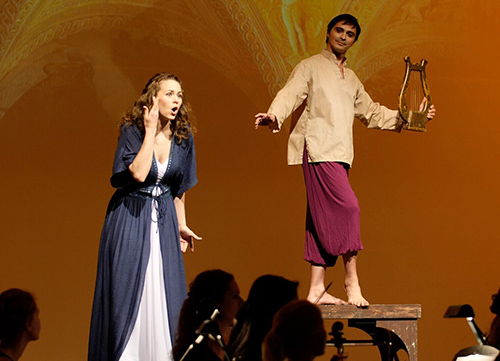
The libretto by Alessandro Striggio tells the familiar story of Orpheus (Orfeo) as he descends to the underworld to save his beloved Eurydice (Euridice). He ultimately fails by turning too soon to see her as they ascend.
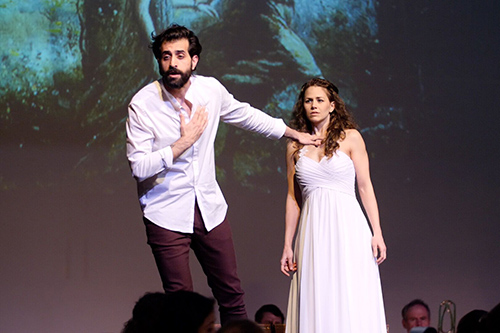

A central platform behind the ensemble was flanked by the excellent Apollo’s Singers — fully engaged and off-book — but the action took place throughout the hall. Behind the platform were both the sumptuous brass and a large screen with wonderful projections of period paintings, often of specific scenes from the Orpheus myth.

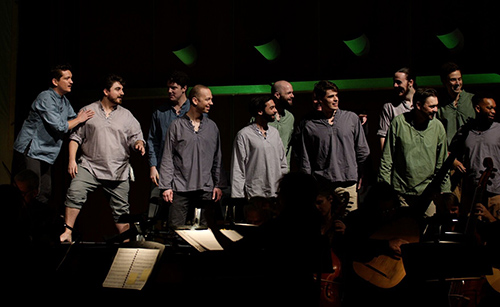
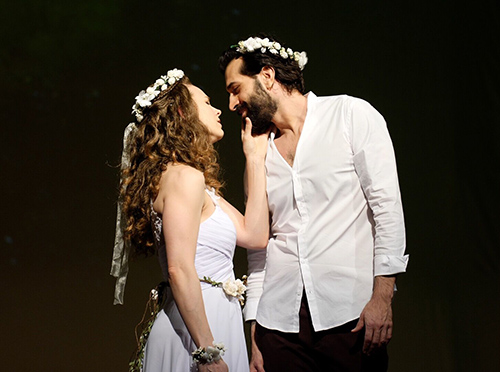
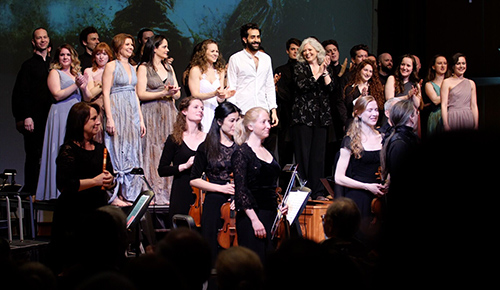
Brandishing a lyre, dancer and choreographer Carlos Fittante took part in the opening wedding celebration with regal, upright dancing. He returned as a vigorous Bacchus in the final act to goad on the murder of Orpheus.
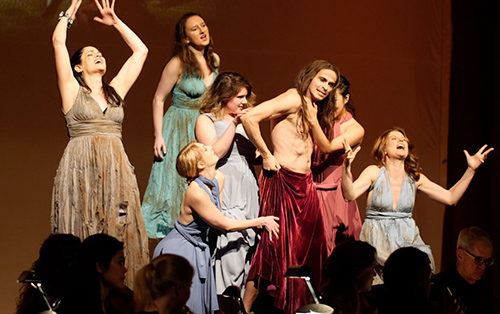
Finally, Schiffer crafted an excellent and fitting ending for Monteverdi’s tale from Striggio’s original text from 1607. He has the style down and and even brought back an earlier ritornello to seamlessly wed this new work to Monteverdi’s. This new/old ending gives the opera balance and a logical mythological ending full of fury and sadness — even if it is less “authentic” than the ending Monteverdi wrote in 1609.
In the end, Apollo’s Fire has created a moving and musically engaging evening. If only I had Wednesday night free.
Photos: Erica Brenner Productions.
Published on ClevelandClassical.com April 16, 2018.
Click here for a printable copy of this article



